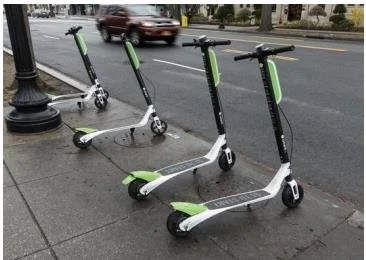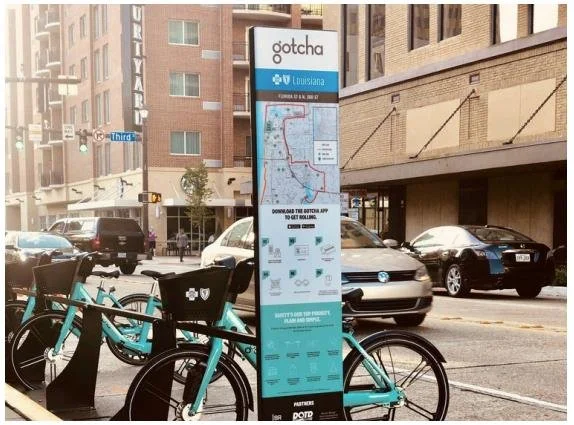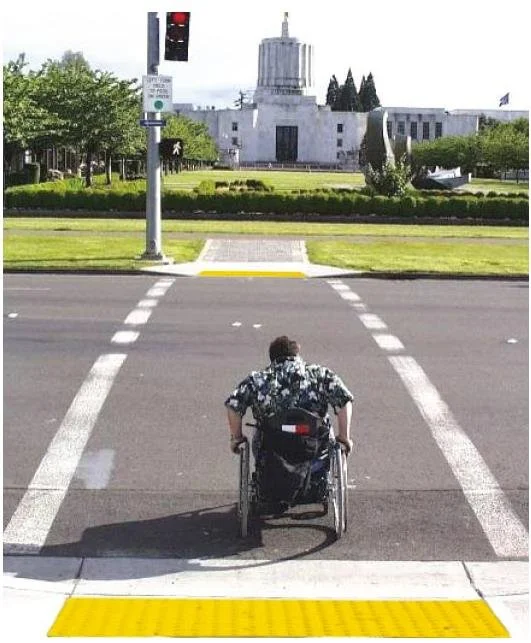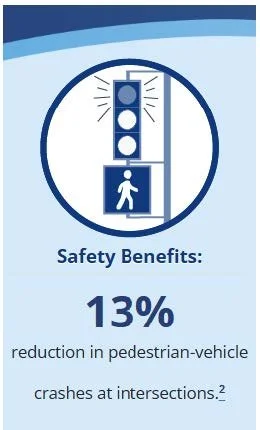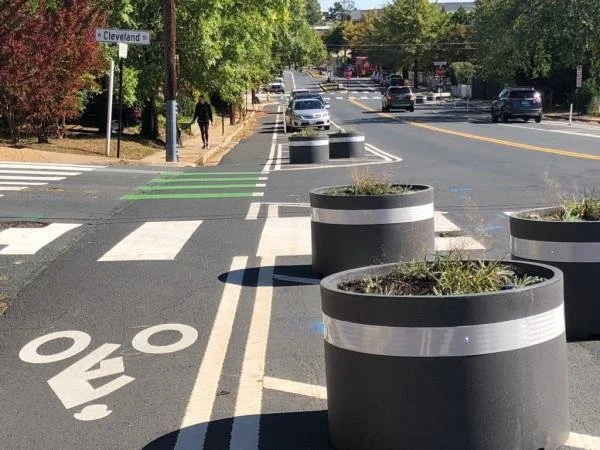Non-motorized
Non-motorized travel refers to infrastructure and technologies that support walking, biking, and micromobility—such as shared transportation/mobility options, bicycle signal phasing, leading pedestrian intervals (LPI), and buffered bike/micromobility lanes—to improve safety and accessibility for all users.
shared transportation/mobility
Shared mobility includes bikes, cars, and scooters available for short-term rental, usually through stations spread throughout an area.
Costs
Bike share systems: $15,000 to $100,000, depending on the number of bikes and stations
Scooter share systems: $20,000 to $80,000
Car share services: $10,000 to over $100,000
Key Considerations
Availability of space for stations
Population density and demand
Access to power for charging vehicles
Pros
Last-mile solution to transit
Reductions in greenhouse gases
Reductions in vehicle use or ownership
Cons
May not be returned to a hub
Start-up and maintenance costs
Vandalism
Representative Use Cases
Santa Monica
Baton Rouge
Field Conditions
Best suited for dense downtown areas, central business districts (CBDs), or mobility hubs where there is high demand for shared transportation options.
bicycle signal phasing
Designated traffic signals at intersections that indicate when cyclists have the right of way to cross safely.
Costs
Ranges from $1,000 to $100,000 per intersection, depending on the number of signal heads, system complexity, and type of bike detection technology used.
Key Considerations
Type of bike infrastructure present
Presence of other roadway users (vehicles, pedestrians)
Priority given to different users at the intersection
Pros
Enhances safety for cyclists
Designates specific time for different intersection/roadway users
Cons
Reduces time for cars at the intersection
Increases complexity of the signal
Representative Use Cases
Nashville, TN
Field Conditions
Ideal for intersections and areas with existing bike facilities, especially in denser locations where multiple transportation modes converge and signalized intersections are present.
leading pedestrian interval
Traffic signals adjusted to give pedestrians a head start by allowing them to enter the crosswalk before vehicles get a green light.
Costs
Typically ranges from $200 to $1,200 per intersection, depending on the existing infrastructure.
Key Considerations
Availability and type of pedestrian infrastructure
Presence of other roadway users
Priority assigned to different users at the intersection
Pros
Enhances safety for pedestrians
Allows pedestrians to establish presence in the crosswalk before vehicles can go
Cons
Minor vehicular delays
Increases complexity of the signal
Representative Use Cases
New York City
Field Conditions
Best suited for signalized intersections that include pedestrian facilities such as crosswalks, curb ramps, and sidewalks.
buffered bike/micromobility lanes
Dedicated lanes for bikes and micromobility devices that include a physical or painted buffer to separate cyclists from vehicle traffic or parked cars.
Costs
Typically ranges from $40,000 to $118,000 per mile, depending on design features and materials used.
Key Considerations
May require cyclists to merge with traffic at intersections
Sufficient roadway space is necessary for bike and buffer lanes
Safety considerations for all users
Appropriate widths for both bike lanes and buffers
Placement and impact of nearby parking spaces
Pros
Enhances safety
Comfortable cycling
Cons
Requires more of the roadway or increased ROW needs
Community resistance to change


